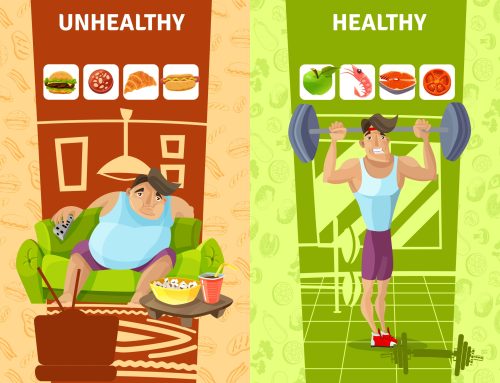 Without a doubt, “healthy is becoming the new skinny” and that means we must have a healthy body composition, i.e. a healthy muscle/fat ratio.
Without a doubt, “healthy is becoming the new skinny” and that means we must have a healthy body composition, i.e. a healthy muscle/fat ratio.
Most gyms and fitness centers are equipped to measure your lean body weight (muscle tissue) versus your body fat percentage.
For a female, a healthy body fat level is between 14-24 percent and for a male it is between 8-17 percent. So, for example, an obese woman would have a body fat level of over 32 percent while an obese male would have one at 25 percent.
It is possible to have a high and dangerous level of body fat yet be considered “skinny” or “thin” and sport a so called “healthy” weight on the scales.
However, this “thin-looking” but over-fat condition is primarily caused by dieting or not eating enough and doing too much cardio type activity and none or not enough proper muscle building and maintaining activity.
Truth is, without exercise, fat forms on the body, especially in the abdominal area – both deep inside the abdominal cavity and under your skin widening your waistline. The real danger is the fat inside because it gets wrapped around major organs hindering their proper functioning and releasing chemicals that lead to disease.
If you are currently experiencing excess body fat or a composition test reveals that you have, the healthiest way to deal with it is to begin a proper strength training program to reboot your metabolism and get your body back on tract and burning more fuel. Additionally, you must never starve yourself; you need good quality nutrition to support your proper exercise program.
Rather than reducing your food intake, it’s better to rid your kitchen of any processed foods replacing them with healthier natural whole foods cooked from scratch and participate in proper exercise that will allow you to eat more yet still lost body fat. You’ll have much more energy, feel motivated and your body will benefit and draw from the greater amount of nutrients you are providing.
Here’s a few things to keep in mind concerning muscles, metabolism and body composition:
Muscles use energy when they contract (they are highly metabolic so the more toned muscle tissue you have the more calories you burn).
The more intense your muscle contractions, the more energy they use to perform the movement.
Eventually your movement become intense enough that your muscles use more oxygen than your body can produce. This creates an oxygen deficit that can last for hours after a workout.
Your body requires more nutrients and fuel (calories) after an oxygen deficit because it needs to replenish its energy and oxygen levels. This higher fat burning state is often called an “afterburn” and very helpful if the goal is fat loss.
You need to be taking in more energy than your body is putting out in order to tone and build muscle.
Skeletal muscles account for about 40-50 percent of total body weight in a healthy adult. Sarcopenia (loss of muscle tissue and strength) is the result of lack of activity that challenges your muscle system.
When you fail to take in enough nutrients, thyroid function slows, there is reduction in muscle mass and there is a lower thermic effect of eating and therefore your metabolic rate is affected and falls.
Changing your body composition is simply a matter of making the right lifestyle changes. Just by adopting a few healthy habits, you can enjoy lean muscle mass with a lower body-fat percentage, making it possible for you to keep your metabolic engine healthy and burning calories so you can enjoy a beautiful body shape at any age.
Isn’t it time to throw away all the false statements you’ve accepted about dieting and exercise and learn what it really takes to take weight off and keep it off for good…
“Rebound Free Weight-Loss” can help you do just that…
For more tools and resources from Carolyn Hansen to assist you in attaining your health and fitness goals and achieving the success you desire in life, please visit:






Leave A Comment